What a funny coincidence, the Shanghai Auto Show just finished on the same week that I discovered a Toyota-related ruin in the city! I am proud to present to you my latest exploration: the site of the former Toyota Cotton Mill. Actually, I noticed this place last year during a bicycle ride and already I wanted to jump the fence but then I forgot. When I got inside a few weeks ago, I did not expect to find such an interesting industrial complex inside. As you know, Shanghai has been keen on reconverting its industrial wastlands into very trendy artistic districts. But not this one (yet)!
A relic of the conflictual Japanese economy in Shanghai
After obtaining special economic rights in China in 1895, Japan began to develop industrial manufacturing activity in China. Toyota Textile Mill opened in 1921 in Shanghai, it was one of the first cotton mills in the city.
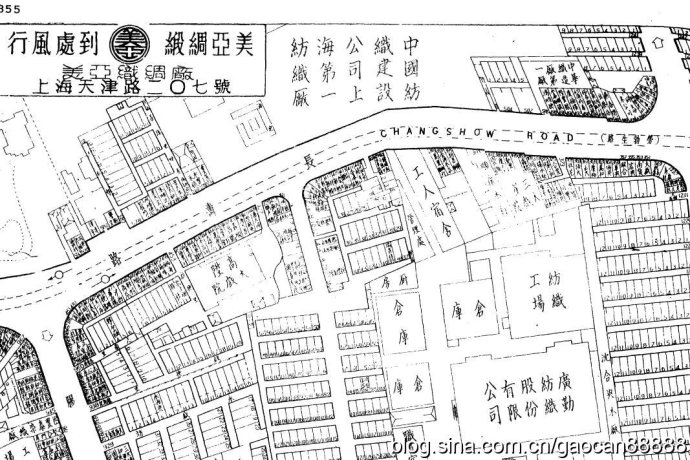
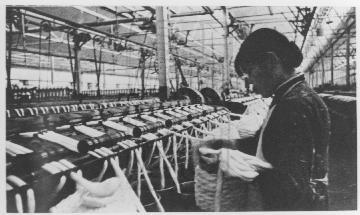


But as you know, the Japanese presence in China was a source of great tension and several boycotts against Japanese goods started in 1915, 1919, 1923, 19251. According to the authors, on the 209 strikes that happened in Shanghai between 1918-1929, 119 (or 56,94%) were against Japanese-owned mills. The Toyota factory itself was quite damaged by the 1925 strikes which broke out in these Japanese-owned textile mills in the city. The workers were underpaid and placed on the worst jobs. According to a historical research, Toyota Textile Mill was lit on fire on February 13. 1925; meanwhile, there were violent exchanges between the strikers and the Japanese management. Mr. Harada, the manager of the mill, died of his injuries, and others were thrown in the Suzhou River2. After the police repression, the cotton workers got more union rights.
A symbol of industry under socialism in China
After the victory over Japan in 1945, the factory returned to China. In 1950, it became a national factory and was called National Shanghai Number One Textile Mill (later changed into Shanghai First Textile Mill) and was working at least until 1987 (according to the date printed on a poster I saw on the wall).

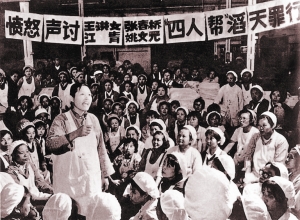
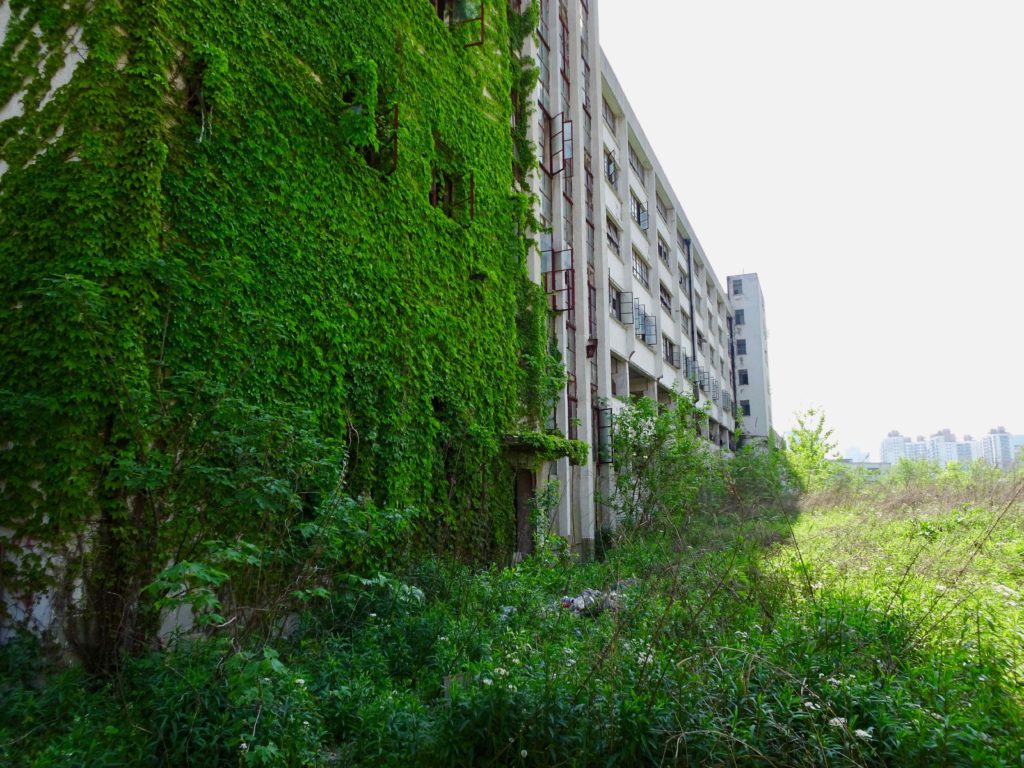
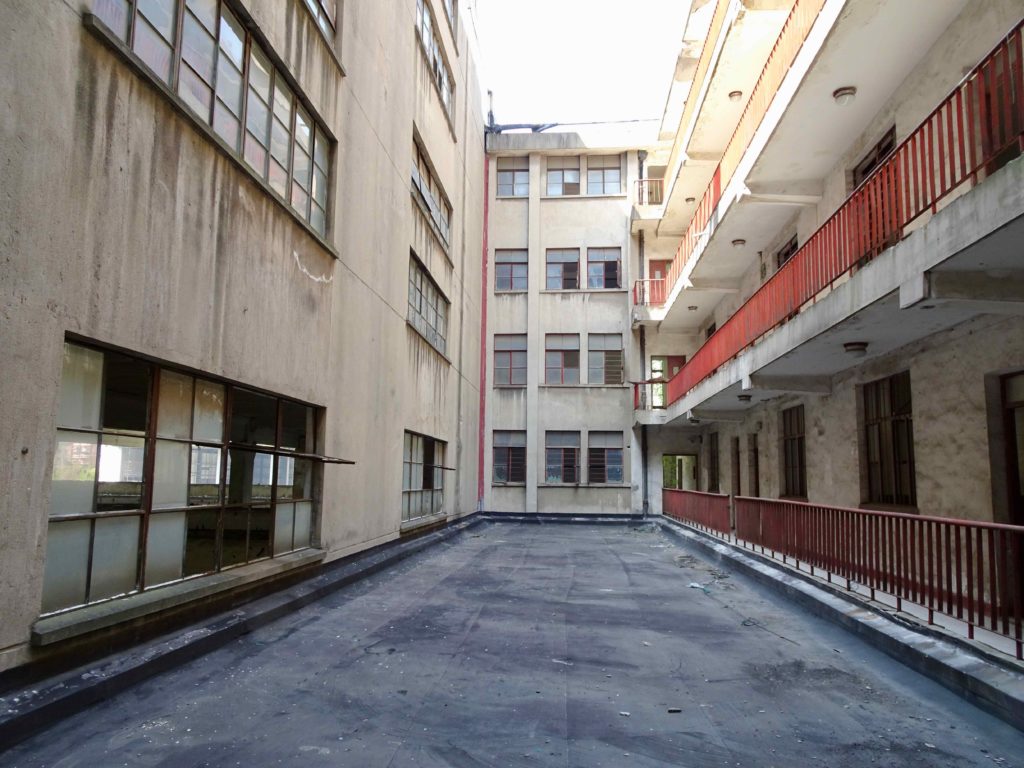
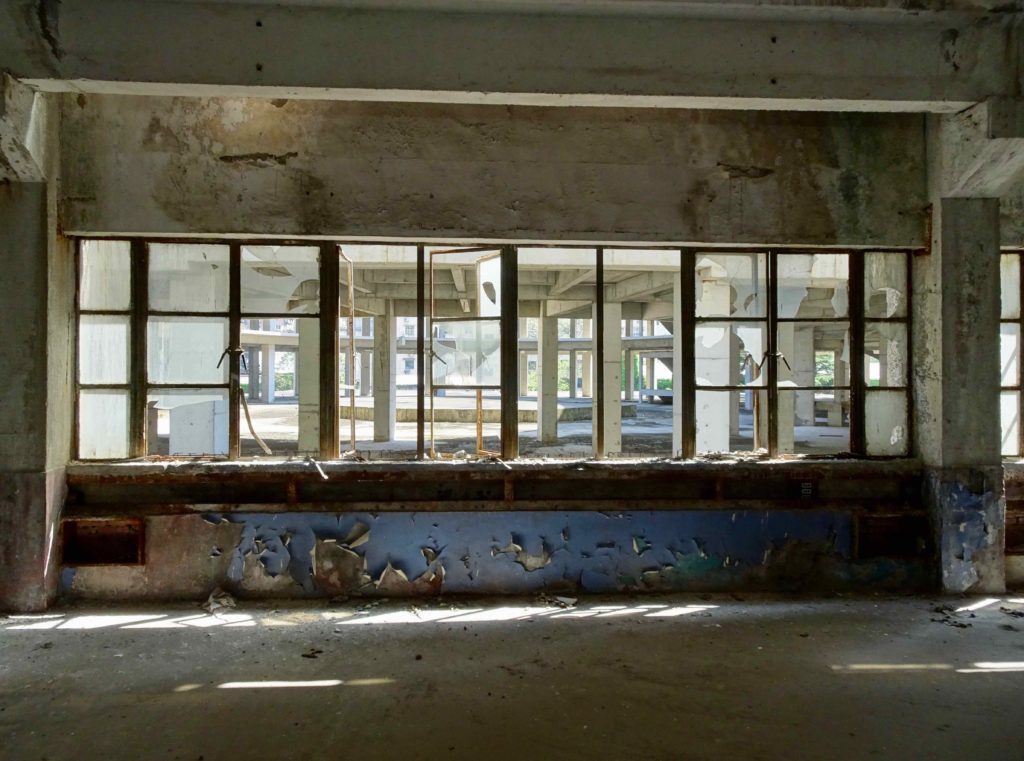
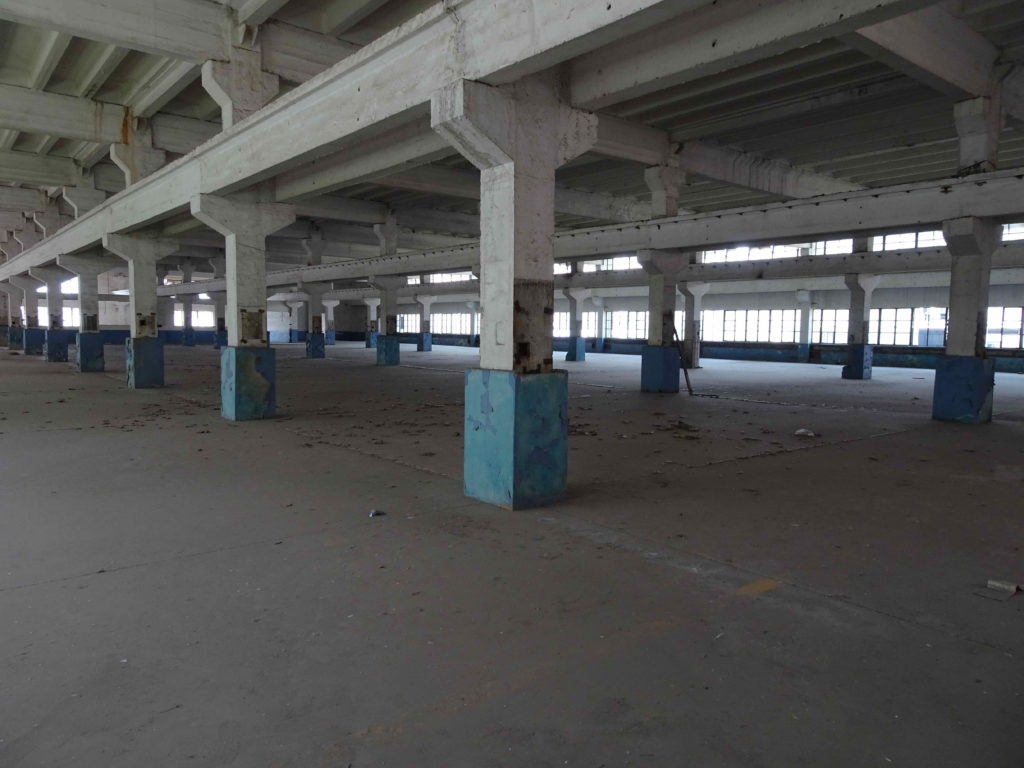
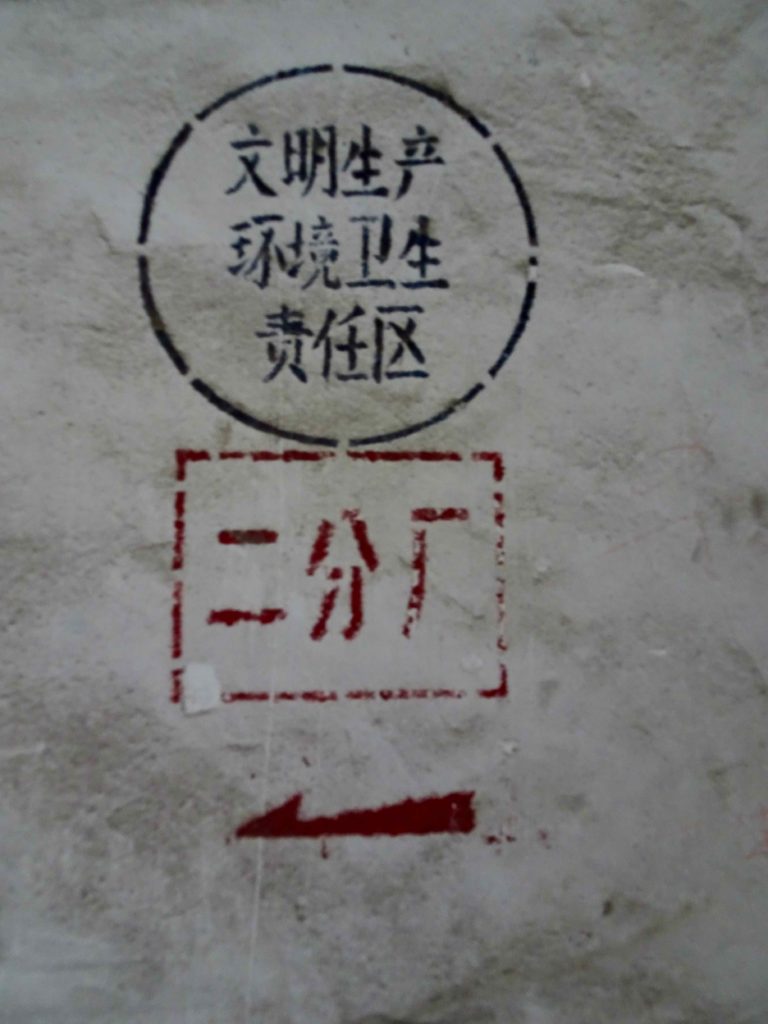
Industrial heritage reconversion project… Interrupted! A mixture of historical ruins and unfinished-abandoned buildings
As all industrial sites of Shanghai, they rarely remain industrial wastelands, especially along the Suzhou river. Indeed, there is a very small part of the factory – the office building, made of red bricks – that has already been turned into an industrial heritage site (supposedly if you read for instance this news report, it is now a memorial of Japanese industrial presence in Shanghai, with machines etc., but it is always closed so I cannot confirm!), but separated from the others… The rest of the area is… still abandoned! How is this possible?
According to Google Earth and to several news reports, I learned that this place was supposed to be turned into an industrial heritage park, and the real-estate developer in charge of the project clearly demolished a lot of the factory architecture. The project was conceived in 2007 and implemented in 2009. However, all the buildings that started to get built or renovated were stopped in progress a few years ago, the workers moved out, and the site was abandoned, left to the security guards and the wild dogs. This is what the coexistence between old factory buildings and lanweilou looks like now.
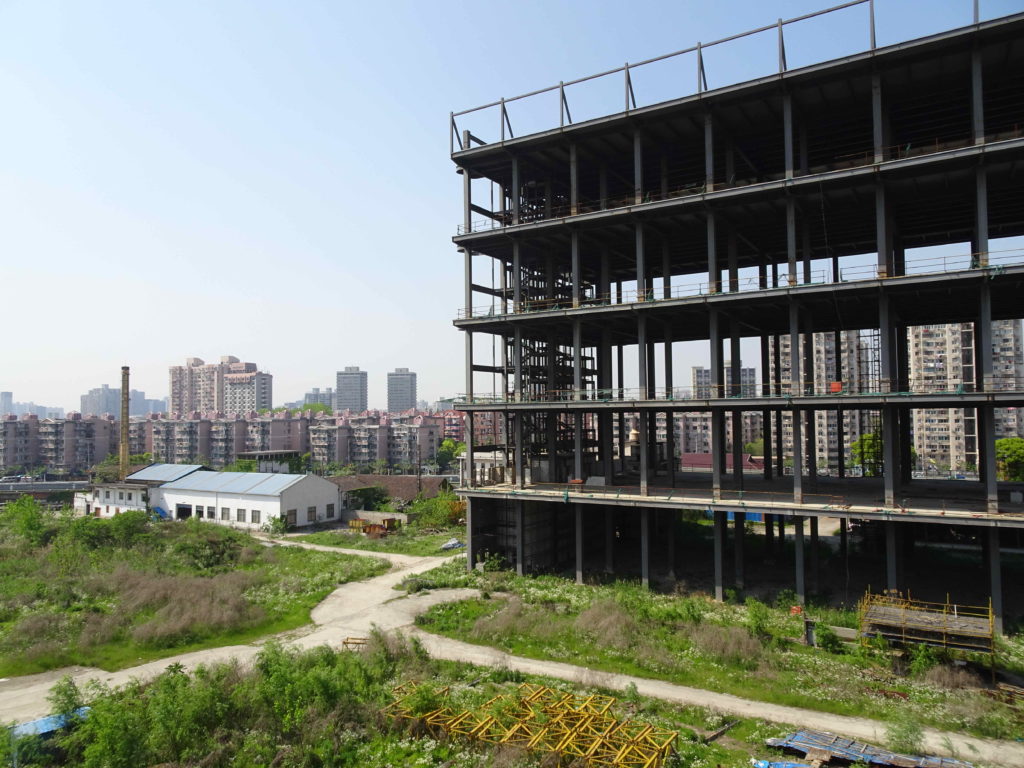
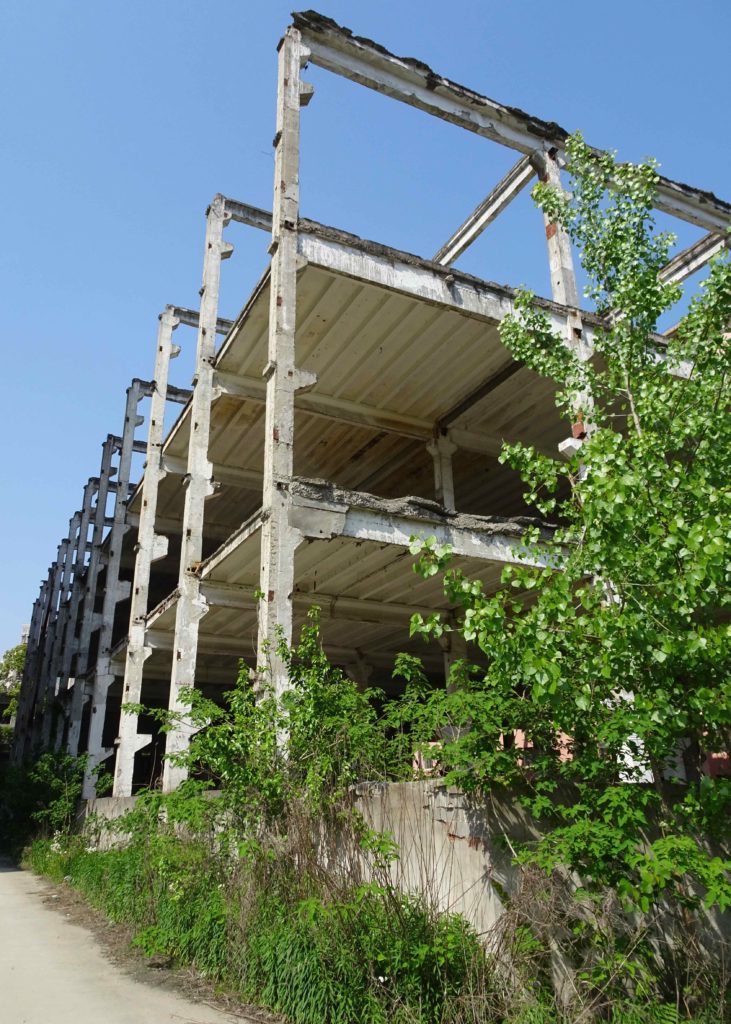
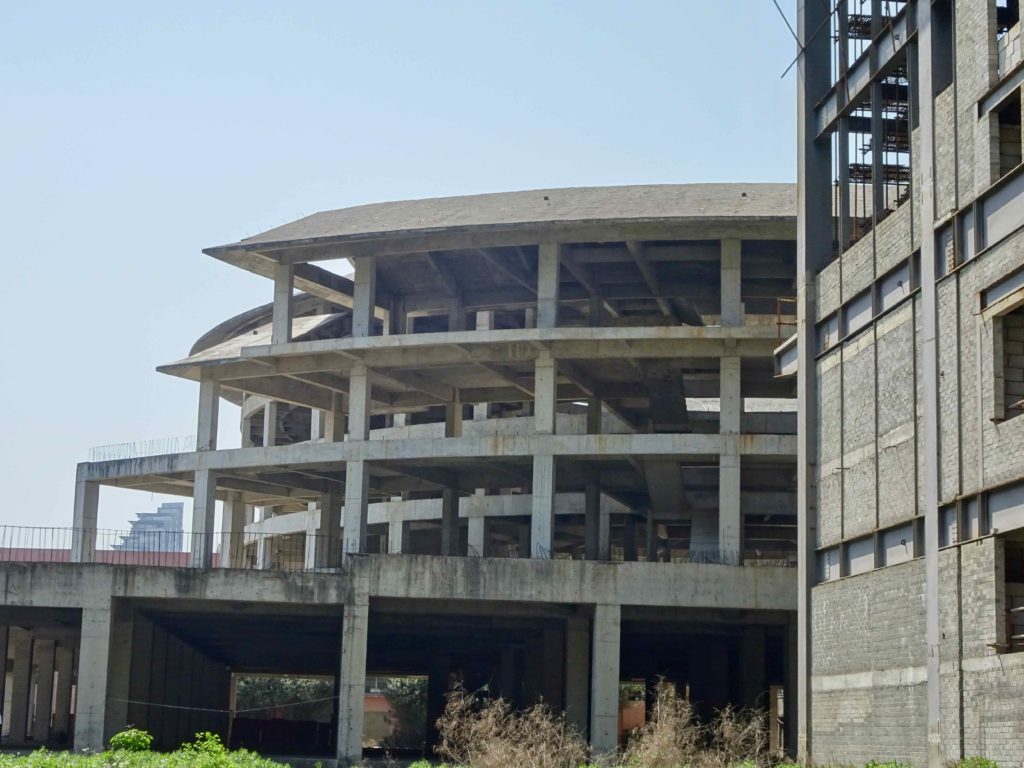
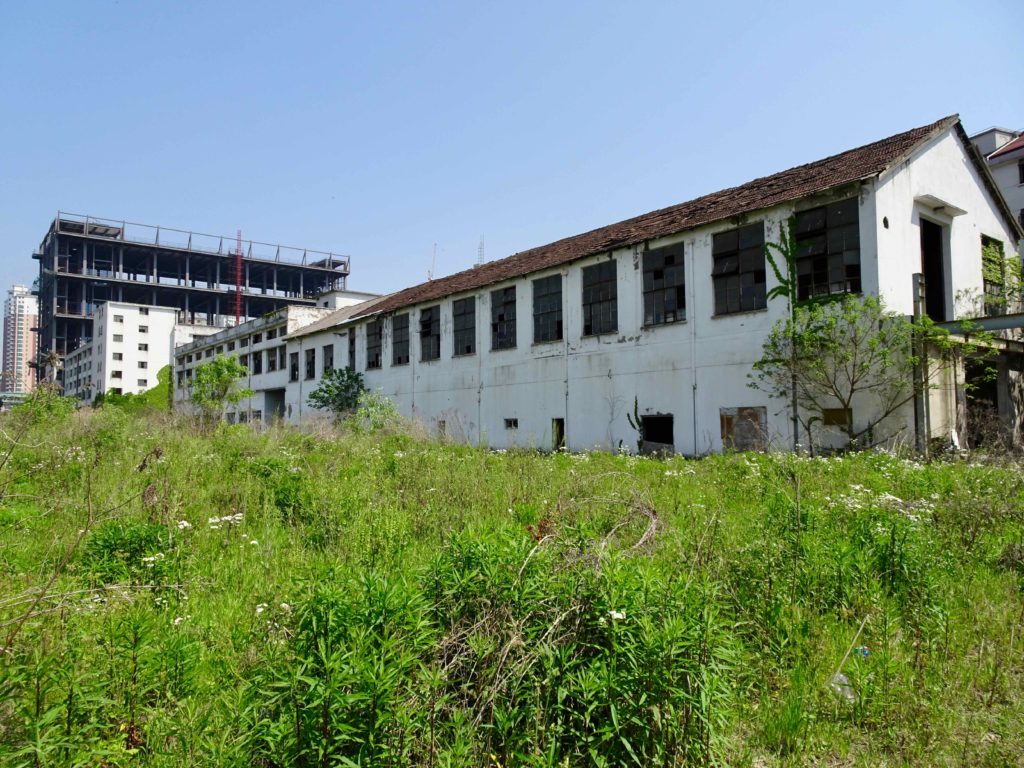
Well, who knows when the workers will come back on this construction site, but until then, let’s enjoy this unusual place while it lasts!
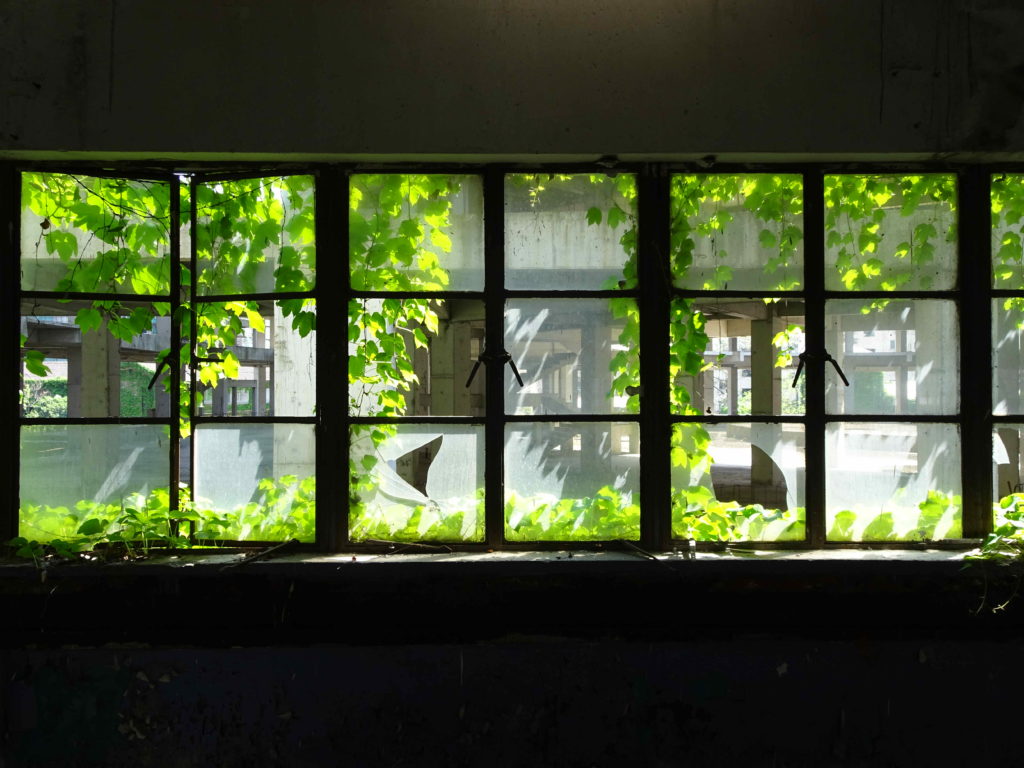
Where to find this?